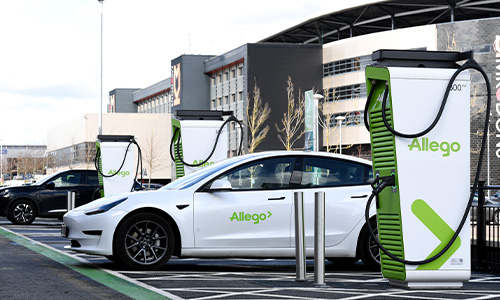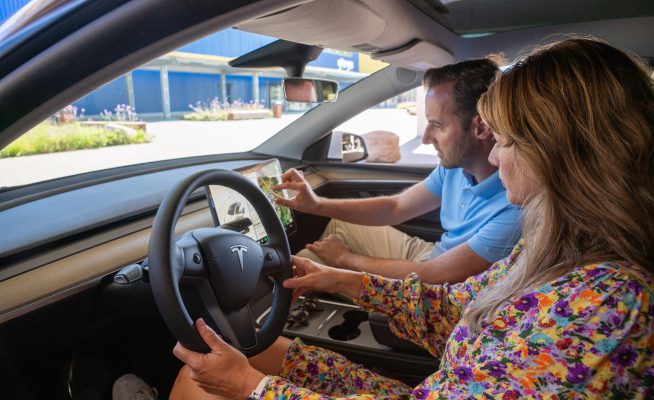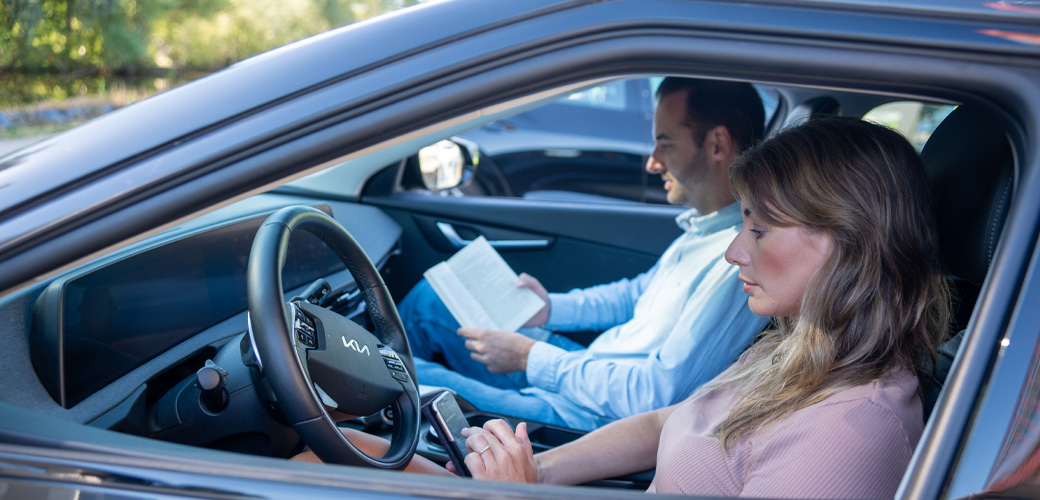

More and more people are switching to an electric vehicle (EV). One of the biggest changes is the way you recharge your mode of transport. In this blog, we will dive into which variables influence the speed of your fast-charging session, using examples from everyday practice.
Chargers and charging hubs are everywhere. Along the highway, in car parks, around office buildings, and in residential areas. We are often asked: “How long does it take to charge an EV at your charging stations?” While the question may be simple, the answer is a bit more complicated. The speed of your charging session depends on a smorgasbord of variables.
What variables affect your charging speed?
In addition to the power of the fast-charger connector you choose, there are several parameters that affect your charging speed:
- Battery: Capacity and state of charge of the battery
- Charging technology of your car: Maximum supported charging speed, charging curve, and, related to that, battery-pack management (battery management system/ BMS)
- Temperature: Both the outside temperature and the temperature of the battery
This blog will provide more insight into each one of these variables.
Battery
Battery capacity
The capacity of the battery in an EV influences the charging time. It seems quite obvious that the larger the battery capacity, the larger the range of the EV. Or not? Actually, weight and driving efficiency of the vehicle play an important role as well. For example, the realistic range of the Audi eTron with a 86kWh battery is approximately 320 km, while the Hyundai IONIQ 5 long range with a 76kWh battery has a realistic range of 385 km.
Battery capacity is measured in kilowatt hours (kWh), which means the larger the kWh capacity of the battery, the longer it takes to charge. It takes longer to charge the 86kWh battery of the Audi than the 76kWh battery of the Hyundai at the same power level.
And again, there is a catch. The above only applies if both vehicles charge at the same power level. In many cases car manufacturers opt to increase the maximum charging power of the vehicle when introducing models with a higher battery capacity.
State of charge
The state of charge (SoC) is the charging level of a battery in relation to its capacity. In short, how full is your battery. State of charge highly influences the speed of your fast-charging session. More detail on this subject can be found under ‘Charging technology of the EV’ in this blog.
We don’t mean to be a spoilsport, when we state that it’s not possible to fast charge at the advertised charging power from 0 to 100%. Let’s draw a comparison with filling a bottle of water: If you fully open the tap, the first part of the bottle will fill up quickly, but the last part works best when the tap is only partially opened, making it easier to fill the last empty part of the bottle without spilling.
This is what is referred to as the charging curve of the charging session. It differs per EV, but in general, the most optimal state of charge for fast charging is between 10 and 80%.
Charging technology of the EV
The maximum charging power across EV models differs. For example, the Audi eTron mentioned earlier can fast charge at 155 kW, and a specific version of the Porsche Taycan can even go up to 270 kW. On average, multiply charging power times 5 to get an estimate of added kilometers within an hour, and 6 or even 7 times when you drive economically. However, note our earlier comparison regarding the actual kWh consumption per kilometer: It varies per EV.
If both EVs have the same battery size, the Taycan would still fully charge its battery faster. Yet the charging curve and state of charge play an important role in determining whether this is actually the case.
Maximum power and battery management system
How fast an EV charges, depends highly on the charging technology of the car. For example, some EVs are capable of charging at a high maximum power peak, though after this peak, charging power will drop to protect the battery. This is where the charging curve becomes important.
The charging curve is related to the power you can expect versus the state of charge of the battery at that moment. The battery management system (BMS) plays an important role in managing the charging curve.
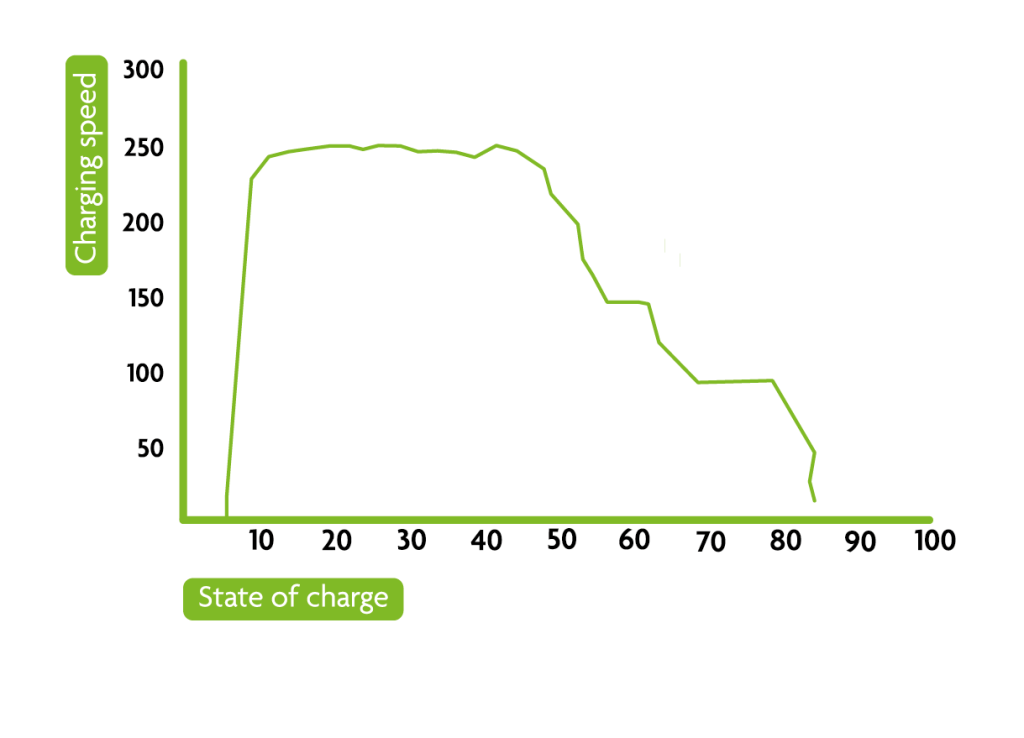
Example of EV charging curve with high-peak power.
The better the overall charging curve, meaning the higher the average charging speed, the faster you are able to fully charge your EV. A great charging curve is one where you are able to charge your EV at high power for a long time even when the battery is heading into a high state of charge. Below are two examples for comparison.
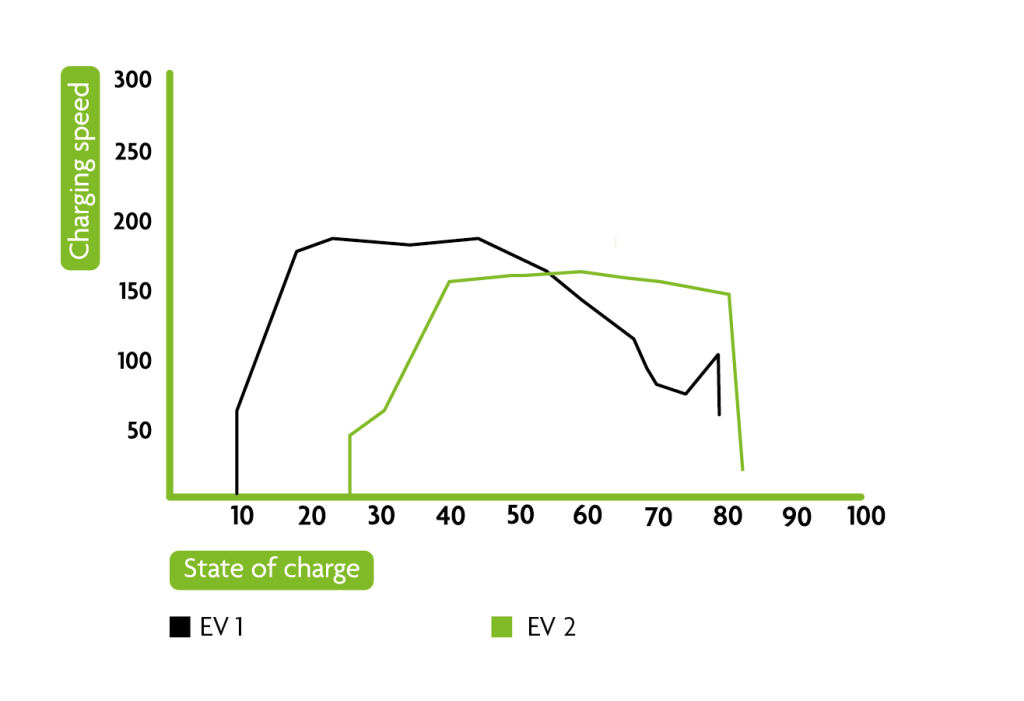
EV 1 Higher charging power peak than EV 2, but charging power dropping below the EV1 at the SoC between 50-60%.
EV 2 Flat curve above 140kW from 30-80% SoC
In the end, it’s all about how many kWh / kilometers you want to add. If you are on your way home and own a home charger, charging up to 60% could be sufficient and EV 2 would achieve a higher average charging speed for this charging session.
The temperature of the battery
When driving long distances, the battery of your EV will heat up. Depending on the brand of vehicle, it will feature passive or active battery cooling. In case of passive cooling, you will encounter reduced charging powers after extended periods of high-speed driving. Newer EVs are more often equipped with active cooling through heat pumps, ensuring the battery is at the ideal temperature for charging.
Another major factor that determines charging speed is the weather. EV batteries perform best between 20 and 30 degrees Celsius. When you start a trip, the battery is still cold, even in summer. In cold weather, the battery must warm up first to charge properly. Some models and brands, such as Tesla, have pre-heating enabled when selecting a fast charger. This will ensure that the battery is at the right temperature before charging, providing a better charging experience. Do take note however that pre-heating also costs energy; it saves time, but it’s not the most sustainable solution.
The two examples below illustrate the difference. Same car, same fast charger, but one charging session in May and one in December.
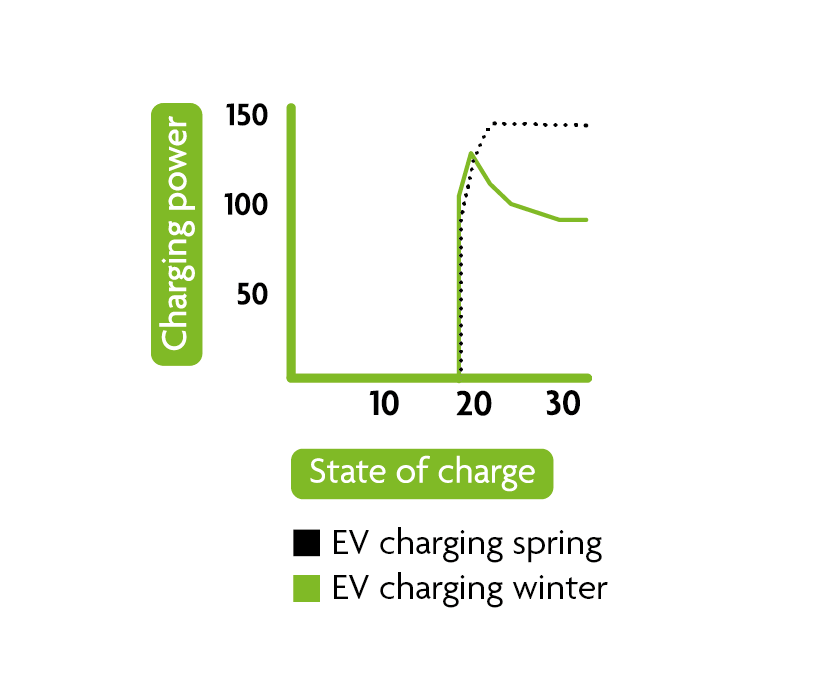
EV charging spring: after initiating session to 120kW speed further increases and stabilizes
EV charging winter: after initiating session to 120kW speed drops
The type of the charger – DC vs AC
Although focusing on the EV and its charging capabilities, the charging station also impacts the charging power you can expect. Your EV may be capable of charging at 150kW, but if you connect it to a charging station that goes up to 50kW, the latter is what you will get.
There is a difference in charging speed depending on the charger type you choose. There are three different charger types: regular chargers (AC), fast chargers (DC), and ultra-fast chargers (HPC). An AC charger charges an EV at a lower power level, which ensures the EV does not have to “work as hard” as it does with a DC charger. When you charge at a DC charger, both the car and the charger have to adjust continually. Basically, the car incessantly tells the charger what it needs in terms of voltage and amps, often resulting in charging at high power levels at the start, but the peak rapidly diminishes. It is implemented to protect the battery. An AC charger therefore charges much more consistently, but at a much lower speed as well.
Looking for a fast charger to check out the fast charging curve of your EV? Find all our current fast charging hubs throughout Europe on allego.eu/fastcharger! If you are considering buying an EV and want to compare the charging specifications and real range of your EV of choice, EV-database is a great resource.

